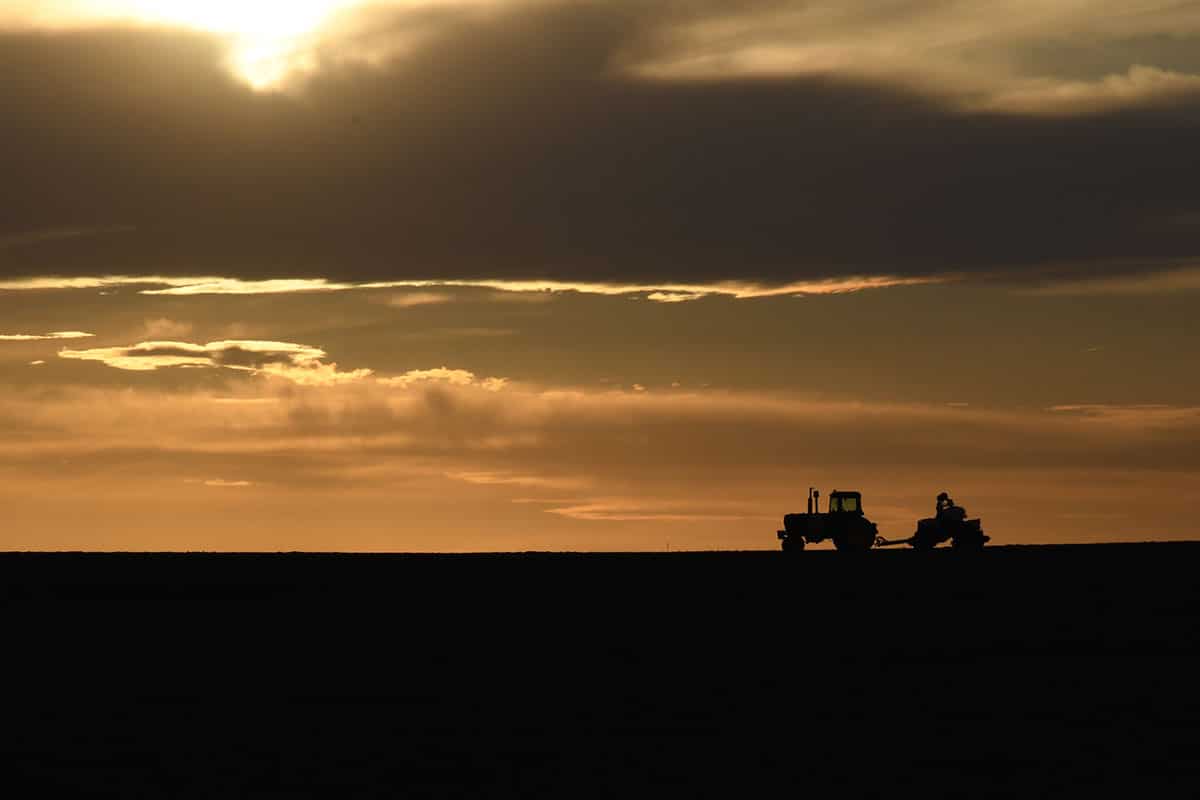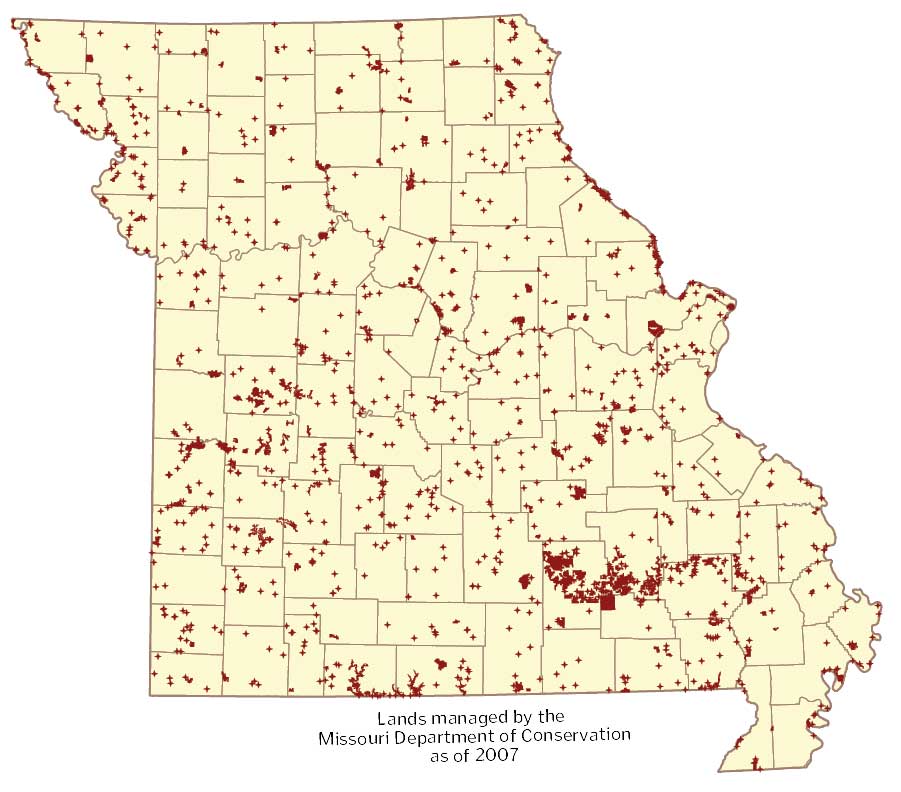Early on an April morning in 2019, Les Clancy brought eleven mules from his farm near Ozark to the Ozark Empire Fairgrounds in Springfield. He and his wife Susan had spent all winter gathering them from across the state. Aged between three and five and just off of open range, they quivered when touched. Some would have ended up in kill pens if Les hadn’t seen promise.
Tied side-by-side along a pipe railing, the rough-looking mules awaited unknown fates. A man came close enough to inspect one. It lifted a rear untrimmed hoof in warning. The stranger backed away. Another mule shook from knotted foretop to tangled tail, then snorted loudly. Dust flew off its shaggy coat. Tension increased.
Les had gathered these mules to give to professional trainers, who will bring them back for the annual Missouri Mule Makeover contest at Ozark Mule Days over Labor Day weekend.
“I bought the mules that weren’t donated,” says Les. “Trainers have the opportunity of showcasing their skills. They get exposure on the Internet. When it’s over, they can keep the mule or let it be sold at the auction. That way they’re paid for their time.”
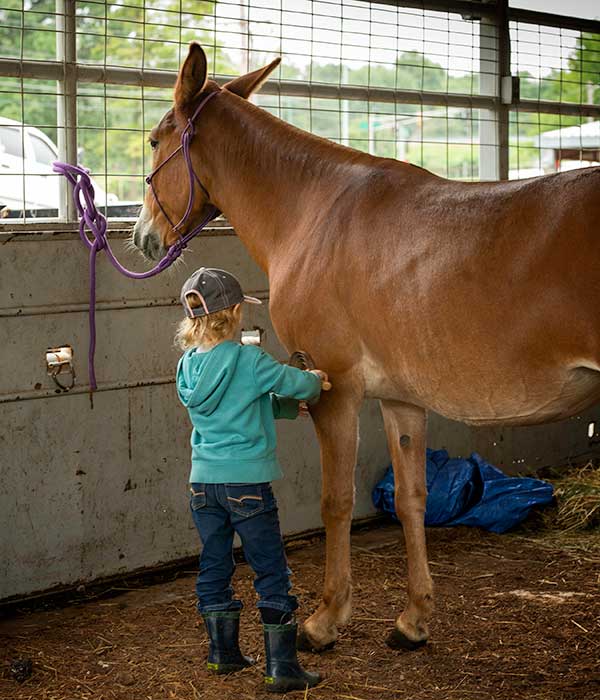
PICK A CARD
Struggling with emotion, Jan Lucas has come from her home near Fordland to say goodbye to a fifteen-hand dark bay mule named Haystack. (Equines are measured in hands from the ground to the top of their withers, a high point between the animal’s shoulder blades. An average “hand” is four inches.) Jan and her husband Noel are donating a spare mule to the makeover challenge because they use teams of two to pull wagons. They hope their extra “yard ornament” will have a purpose. She wants to tell whichever trainer gets the mule that it was previously mistreated, and extra patience will be needed.
From a deck of cards spread out on a table, Max Bishop from Fayetteville, Arkansas, draws Jan and Noel’s mule. Jan is unable to talk with him before the mule is led away and a saddle tossed on its back. Max tightens the girth and pays little attention as the animal starts pitching at the end of its lead rope. Within a few minutes the bucking and kicking ceases. Training has begun.
Another trainer, Jarod Wilson of Ghent, Kentucky, picks a paint molly, or female mule, from the deck of cards and then places his young daughter onto its bare back. Knowing the mules are unbroken, the people looking on draw a collective breath. Everyone slowly relaxes when they see the mule stand calmly without even twitching its long ears. If the mule had made a wrong move, Jared was close enough to pull the girl off of it.
Moving closer, the defending champion, Shane Vaughan from Sheffield, Iowa, yells to Les, “They’re getting a head start on me. I’ve got to get home and start working on a mule.” This gets a big laugh from the crowd.
Shane learned horsemanship basics on Texas ranches where his dad worked, and he learned training techniques from an old cowboy mentor at the Fort Worth Stockyards. About his equine trainees, he says, “I hope to get them better every day, but not every day is good. On the bad days, I try to find a good place to stop, so I can have a better day tomorrow.”
Some of the trainers are envious when Logan Weber of Grubville draws a beautifully built fourteen-hand dun mule. Logan is concerned that mule training will be forgotten if young people don’t learn how it’s done.
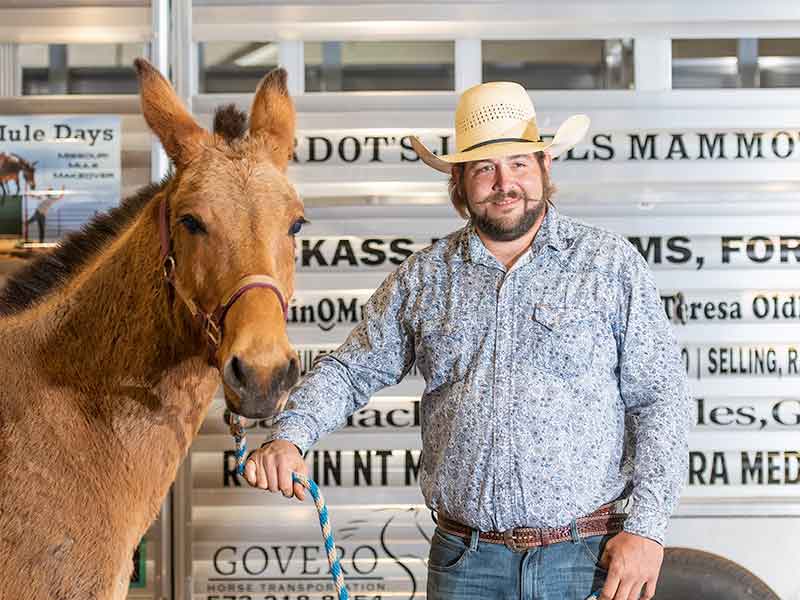
This will be the first time Missourian William “Runt” Rageth from Harris has trained a mule. He has won two Cowboy-Up competitions at the Calgary Stampede in Canada, but they were on a horse. The long-eared mule’s temperament may test his patience. Mules instinctively hesitate to totally trust an unproven human. They need time to commit and, as a result, have the reputation of being stubborn.
It takes less than two hours for the mules to be divvied up, loaded into trailers, and hauled away to new parts of the country. In just 150 days, the mules and trainers will be back in Springfield at the Ozark Empire Fairgrounds again to decide who is best.
DO YOUR HOMEWORK
Sixty or seventy mules and horses normally fill out Max Bishop’s training program. He says, “I let them do what they want at the beginning and end of each session. That way they enjoy the whole experience.” Max changed the name of Jan and Noel Lucas’s mule to Clancy in recognition of Les Clancy, the project’s visionary, and Max enjoys working with Clancy because “he wants to do different things, like me.”
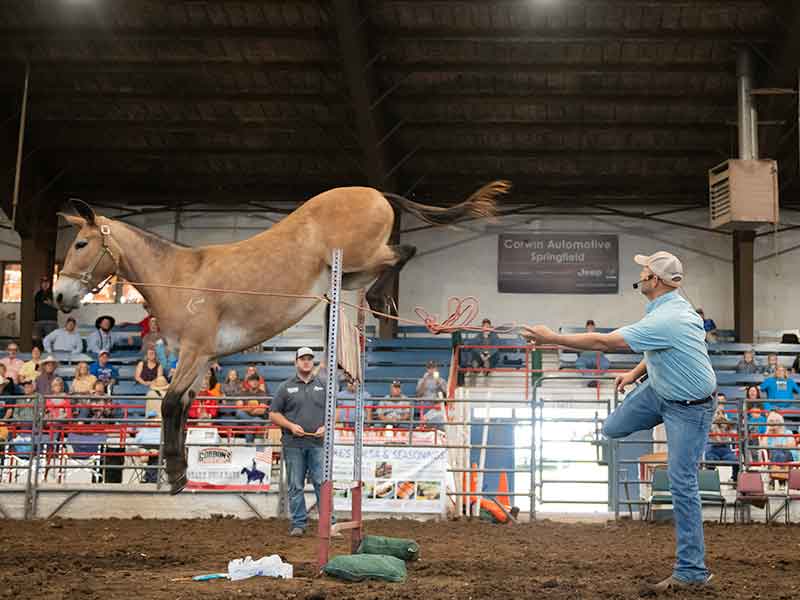
As a professional trainer since the age of nineteen, Catherine Reese from Paris, Tennessee, follows a strict regimen of much ground work before climbing into the saddle. Over a hundred horses and mules go through her facility yearly. Her intention with each of them is “making a good, solid citizen.” She has that same attitude with her home-schooled children.
When Leslie Ballard isn’t training horses and mules, she teaches school. According to her, “confidence is a key. Although I might be mad, hurt, or frustrated, the animal cannot know it. I’m a tad bit hard-headed myself, and that helps. Teaching high school students is a lot like training mules.”
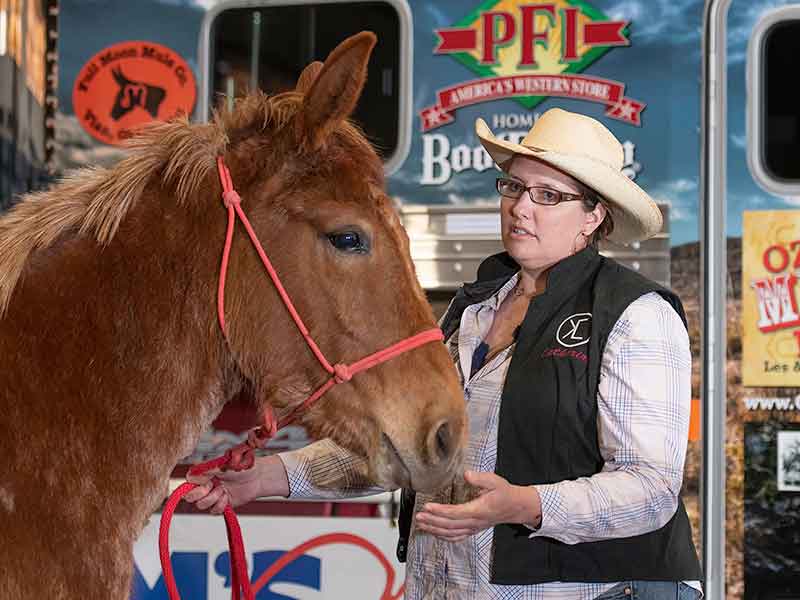
Nellie Bunce drew a fourteen-hand mule. She was representing Shawn Peterson from Montpelier, Idaho. As one of the tallest competitors, Shawn’s feet nearly touch the ground while riding the determined little molly-mule. Shawn explains his policy, “Someone else is going to end up with this mule. So I do my best at keeping it as calm and solid as I can for anyone.” Can mule training be romantic? Shawn and Nellie were married during the 2019 Missouri Mule Makeover training period.
Ty Evans from Utah learned training skills from his dad, who made money riding colts as a kid. Even though his young daughters work with him daily in the corral, Ty doesn’t necessarily want the girls to follow in the boot prints of him and their grandpa. “I hope they chose a career that gives them joy like mine gives me, whatever that may be.”
Jarod Wilson’s daughters created a unique training procedure for his mule by tying plastic dog food sacks around their waists with twine and then jumping out of a hayloft on a homemade zip line. Daddy flinched, but Big Nose Kate didn’t—and that was the point. Flapping bags would startle many horses or mules, who might jump or shy away, but Big Nose Kate just kept trotting like nothing unusual had happened.
Throughout the Missouri Mule Makeover training period, each mule was provided with a balanced diet, dental attention, and proper hoof care to correct problems before being shod. Several of them were hauled hundreds of miles to compete at shows or be used in training clinics. To acquaint them with occurrences expected on upcoming hunting expeditions or while working at ranches, they had guns fired from the saddle, whips popped over their heads, and calves tied with lariats to their saddle horns.
To build even more confidence, some of the trainers provided more unusual experiences for mules. They were ridden up to ordering windows at fast-food restaurants, jumped into swimming pools, and lunged through quicksand without panicking. One mule picked up the trainer’s kids at the school bus stop, and another one endured earth-shaking engine blasts at a monster truck and tractor pull.
SHOW OFF YOUR STUFF
As the trainers gathered together on Labor Day weekend in 2019, it was difficult to believe these were the same wild and wooly mules given away in April. As finished mules, they were calm, alert, healthy, well muscled, and well mannered after five months of intense training and hard work. Each followed cues (rein tug, spur nudge, body shift, or voice command) from its rider to perform specific tasks.
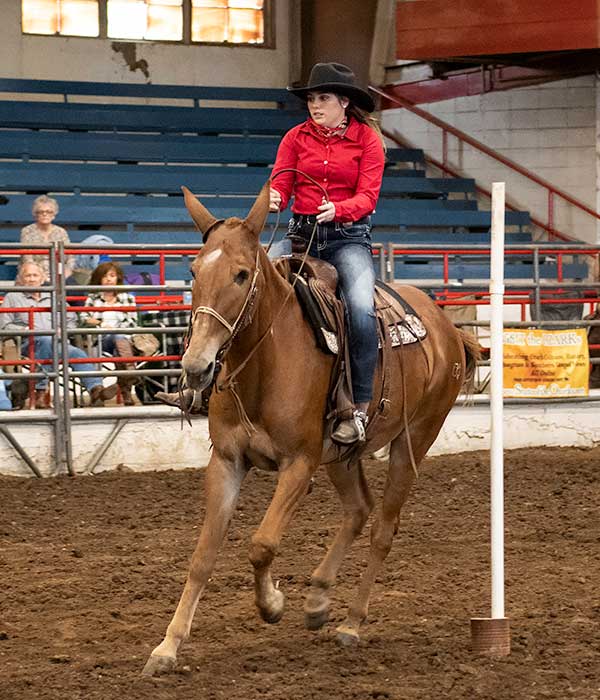
During Ozark Mule Days, the eleven makeover mules displayed mental composure and confidence in halter competition, as well as physical dexterity while navigating obstacle courses. Their final performances in the freestyle event offered a wide range of props that ran from a Flintstones-style mule-mobile to one trainer’s family dressed up in cow costumes and featuring a runaway kid-calf being ridden-down, roped, and tied from mule-back.
When the competition was over, Shane Vaughan from Iowa was crowned the Champion of the Missouri Mule Makeover challenge for the second year in a row. He received a year’s free use of a trailer from Jim’s Motors in Cuba, Missouri, as well as a four-month-old mule donated by Donnie and Teresa Oldham, owners of Rockin’ O Mules in Shawnee, Oklahoma.
Shane is teaming up with Kevin Raber from Millersburg, Ohio, the youngest 2019 makeover trainer at age nineteen. They held training clinics throughout the past fall and winter months. The final clinic was scheduled for the April 2020 mule giveaway, but they decided not to do one there because of Covid-19 social distancing recommendations.
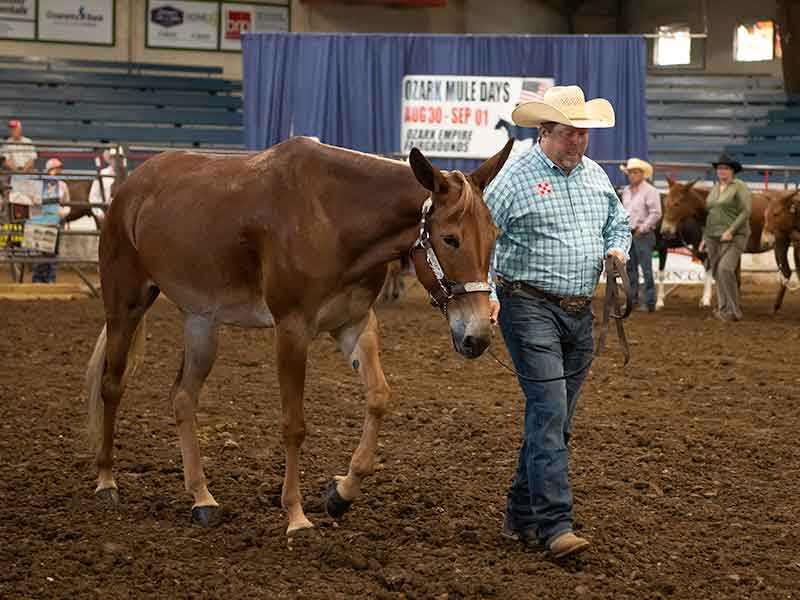
Les says Ozark Mule Days this coming September looks like it could be “one big blowout” because so many earlier shows were canceled.
The Missouri Mule Makeover show will go on, as there’s nothing so stubborn or determined as a Missouri mule, unless perhaps it’s their owners.
Ozark Mule Days
Scheduled for September 4–6
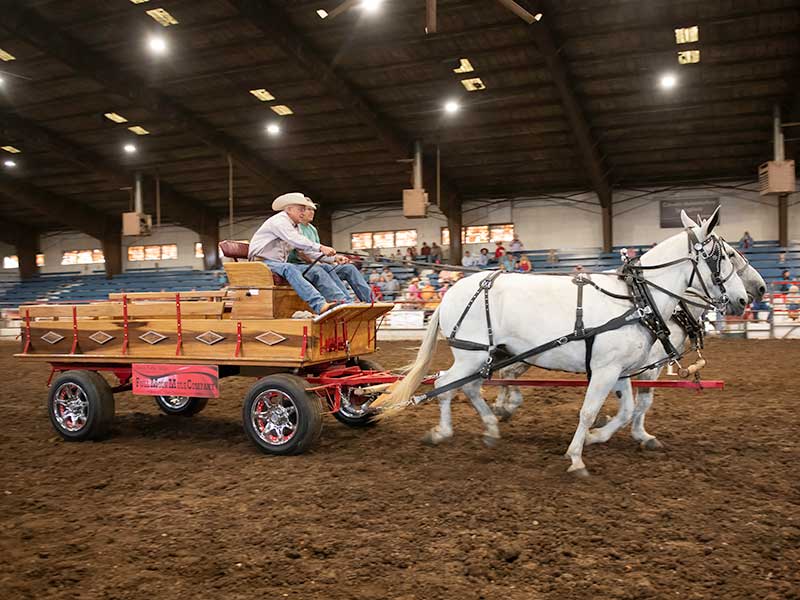
From across the United States, entrants brought nearly four hundred mules to Ozark Mule Days on Labor Day weekend in 2019. For three solid days of entertainment from daybreak to way past dark, there was a constant fun-at-play attitude in the arena. Glen Sapp announced events and ringmaster Les Clancy kept the mischief going as he rode his favorite mule, Corporal Cool Hand Luke.
The building roared with laughter as mule riders competed in outrageous events like Dizzy Bat, Panty Hose Race, and Monkey in a Tree. In the latter timed event, a rider with a passenger behind the saddle runs the mule to a rope dangling from the arena’s ceiling. The passenger grabs the rope and tries to hang on until the mule and rider complete a run to a marker and then return to pick up the passenger for the final run to the marker. Mules were ridden through obstacle courses to test their training and raced full speed neck-to-neck around the arena to see which was the fastest.
During one race, the tongue broke loose from Noel Lucas’s wagon, and his team took off with him still holding the lines. After he hit the dirt twenty feet away, his wife Jan was worried until he got up and started chasing the runaways. He brought a new tongue the next day and was back in business. There’s no stopping a good mule-man or mule-woman.
One evening during the 2019 Ozark Mule Days show, half a dozen draft horse teams competed. The winner of the Show Me Draft Horse Four program was a handsome four-up team of Clydesdales pulling an elegant high-wheeled wagon. They were owned by Springfield Missouri’s Soaring Eagle Farm.
One of the show’s most unusual events is mule jumping. Historically, this began with racoon hunters who trained mules to jump over fences. That led to challenges of who had the highest jumper.
Several jumping mules were brought to the 2019 Ozark Mule Days gathering. After all of them had jumped, Les led his freshly brushed and curried buckskin mule into the arena. She immediately lay down and rolled in the dirt. As the crowd laughed, the mule got up and shook, then laid down and rolled again, which made the audience laugh louder.
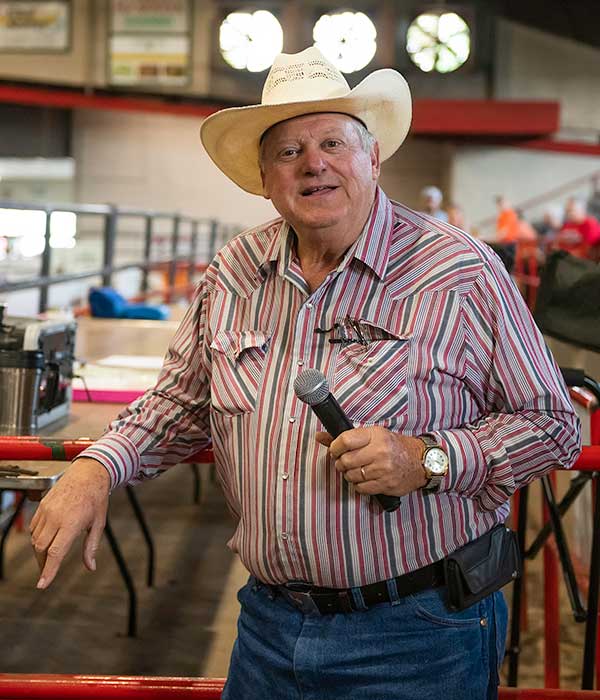
With Les Clancy holding the lead rope loosely, Sadie approached the pole to judge its height. After making two more approaches to gain momentum, she barely cleared it at sixty inches. But that’s all it took to win.
“Sadie’s jumped as high as seventy-four inches,” says Les. “Every place I’ve jumped her over the past three years, she’s won. The last contest we were at, Sadie and another mule were tied. I thought they were too tired to keep jumping, so I told the mule’s owner we ought to just flip a coin to decide which of them would be the winner. He agreed, and he won the toss.”
Les is the guiding visionary behind today’s Ozark Mule Days. His love for mules started when he was twelve and his stepfather managed the Missouri Boys Town farm at St. James.
“Every year there was a big wagon train that went to either St. Louis or Springfield,” Les says. “I was one of the mule skinners. We got out of school for a week. My stepfather also helped start a mule show around then.”
After graduating from high school, Les worked at different jobs in the area and rodeoed some. Searching for a better way to make a living, one day he wandered into the office of an army recruiter, a cool cat with a gift of gab.
“No one would have guessed I’d be a military man,” says Les. He looks back at twenty-six years and seven months of active duty in the US Army and Missouri National Guard and realizes that joining was the right thing.
When his unit was headquartered at Springfield, Les purchased a farm in nearby Christian County. That was when a friend asked him to help start a mule show, since Les had been involved with one earlier at St. James.
After being held in an outdoor arena at Ozark for several years, the show was moved to Springfield’s Ozark Empire Fairgrounds where it could be presented indoors.
Keeping entry fees low is important to Les. “When I was a kid there wasn’t a lot of extra money,” he says. “I want this show to be affordable. Even if the mule didn’t cost much, a kid should have a place to show it off. For a few dollars, they have a chance to win good money.”
Each year the Ozark Mule Days organization chooses a person or charity to support. In 2019, the Wounded Warriors Project received a check for $8,375 to help disabled veterans.
Les smiles when he describes future plans for the show, such as adding a blacksmith contest and a youth division to the Missouri Mule Makeover competition—a ten-year-old has already entered. He’s also contemplating lengthening the show another day to include everything.
“I have some great sponsors who want to see the show grow,” he says.
Related Posts
Ozark Show Announced
On February 26, 2016, Netflix announced it would be doing a new television series starring Jason Bateman. “Ozark” was to be a “dark drama” set and filmed around the Lake of the Ozarks. Missouri laws made filming here prohibitive so it was played out in Georgia.
This is Our Missouri
A photo project helps commemorate the bicentennial.
STATE-TISTICS: Conservation Areas in Missouri
Conservation areas by the numbers


